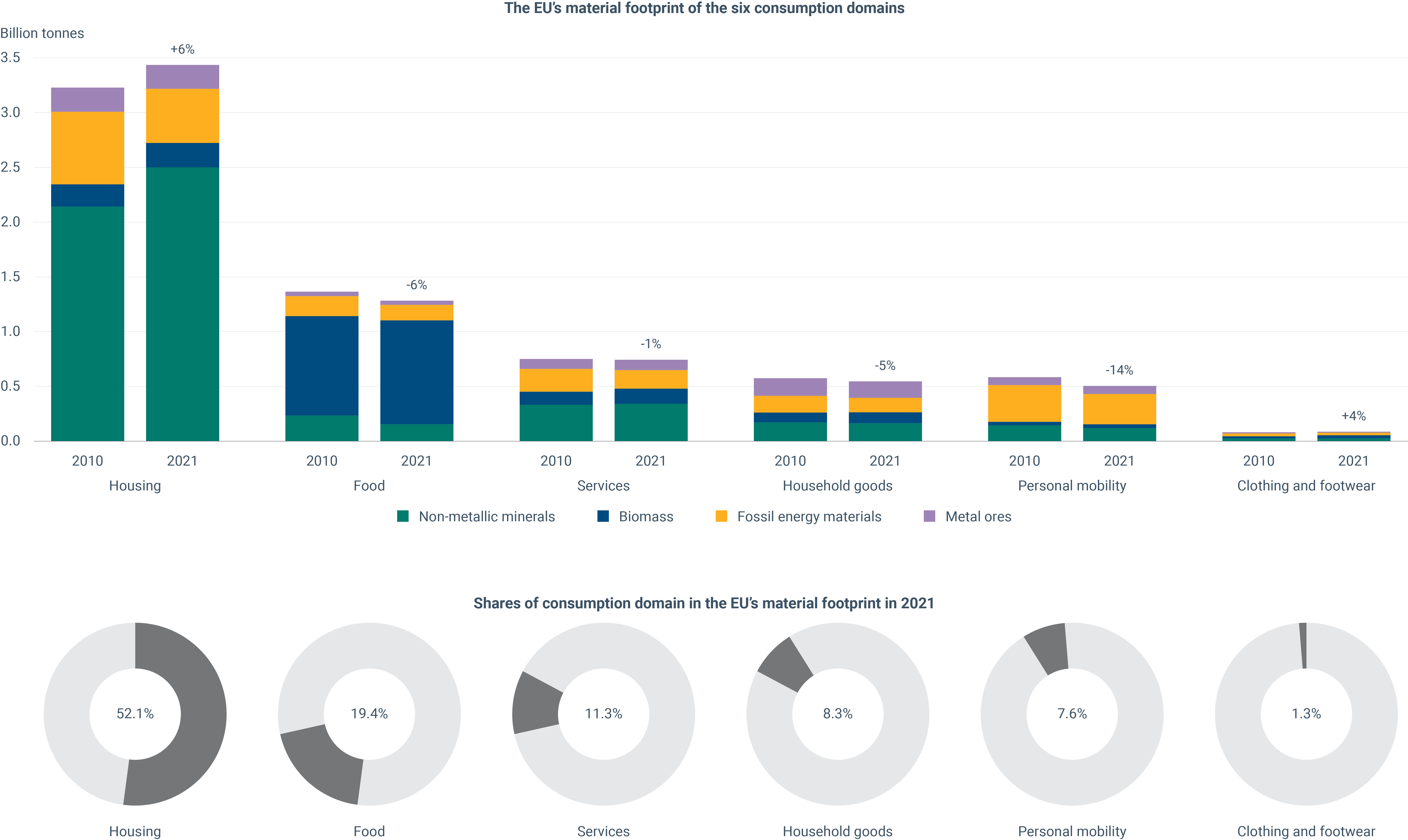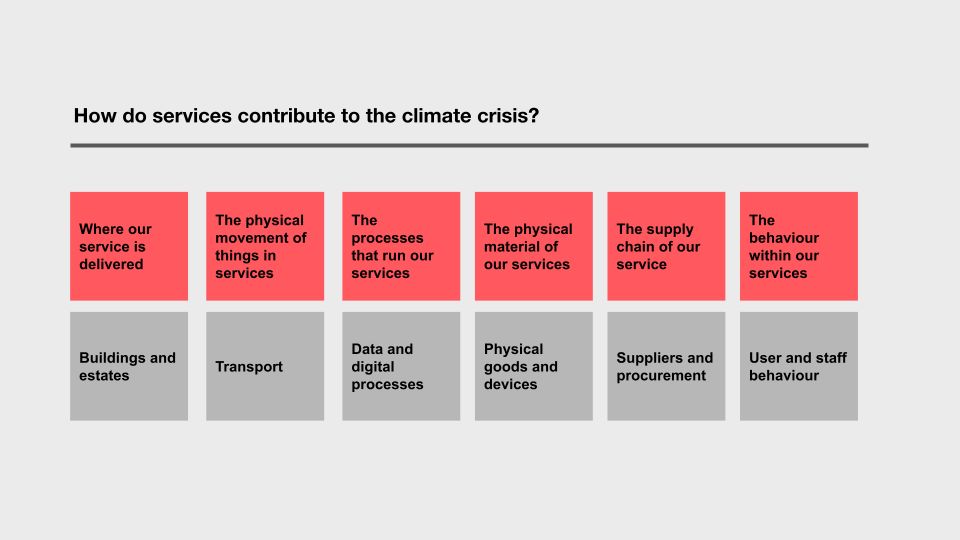Learn that services aren’t sustainable by default

A decade ago there was this idea, that if we could move people from products to services, that would make things a lot more sustainable. Today, a lot of things have become services. But the world isn’t really much more sustainable.
As service owners, creators or workers, we sometimes thing that we’re not really in the problem. We’re not producing mass market shit like fast fashion clothes that get put in a trash as soon as they are worn once. We’re dentists, accountants, office workers. What we create is intangible. So it can’t break the planet, right? Sad news. Services also have a negative impact on the environnement.

Karin Fink made me aware of a publication by the European Environment Agency called « From data to decisions: material footprints in European policy making ». In this report, you can find a graph that clearly shows that even services have a material footprint on the environment.
From what I understand, that report seems to show that Services have a worth material footprint than clothing and footwear, with 11,3% of shares of consumption domain in the EU material footprint compared to 1,3%.
Ness Wright in her course Designing Sustainable Services, shows the many place services can have a negative impact on the climate crisis. She lists (1):

Where our service is delivered: Building and estates
The physical movement of things in services: Transport
The processes that run our services: Data and digital processes
The physical material of our services: Physical good and devices
The supply chain of our service: Suppliers and procurement
The behavior within our services: User and staff behaviour
Footnote
(1) This list comes for a preview of Ness’s courses that she shared on Linkedin
Action question
Do you still think your service doesn’t hurt the planet? Who could you ask to show you where your service sucks for the planet?
Daniele's notes
This is the first shitty draft of this principle
This principle might one day make it in the fifth book in the "Service Design Principles" series that explores how to better serve humans and the planet.
If you're curious about service design principles, you can get the four previous books in the series, with proofread principles and less grammatical creativity.